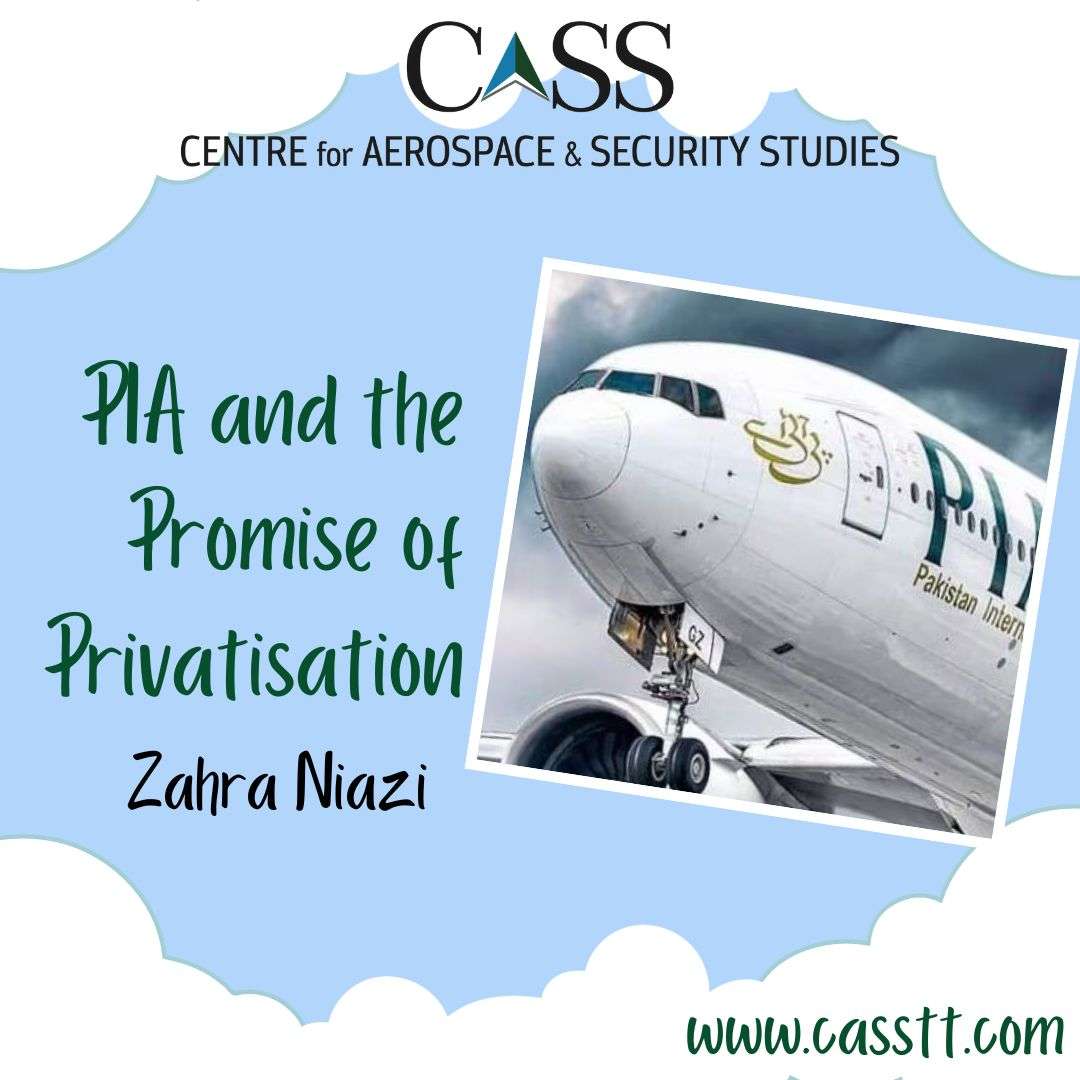The Pakistan International Airlines (PIA), once the shining jewel among global airlines, still carries the legacy of its golden era. Though recent decades have posed challenges and shifted the carrier to face financial headwinds, the spirit of the airline remains undimmed. The combined challenges of a fluctuating economy, global events such as the COVID-19 Pandemic, and competition have had their impacts, but these are issues faced universally by many airline companies. Critics often point to internal factors, like governance and inefficiencies, as contributing elements.
Yet, there is a silver lining: multiple experts and policymakers advocate for a more competitive, efficient, and private sector-involved future for PIA. Embracing a fresh start, the Cabinet Committee on Privatisation (CCoP) recently greenlit a revival plan, poised to redefine PIA’s trajectory and re-establish its stature in the aviation industry. The CCoP decided last month to include PIA on the list of active privatisation programmes after the initiation of the process to amend the Pakistan International Airlines Corporation (PIAC) Act 2016, empowering the Federal Government to sell PIAC’s stakes to the private sector. The comprehensive revival plan, set to be implemented by 2025, proposes that in its initial phase, the airline’s assets and liabilities be transferred to a new holding company, effectively making PIA a debt-free subsidiary of this entity. The subsequent phase focuses on restructuring PIA, offering 40% of its shares on the international market, and operating the national carrier under a Public-Private Partnership (PPP) model and outsourcing its management.
The revival plan has been prepared to be materialised by 2025 according to which assets and liabilities of the airline will be transferred to (and managed by) a new holding company in the first phase, incorporating PIA as a debt-free subsidiary into the holding firm. The second phase will involve restructuring the airline, selling 40% of its shares in the international market to run the national carrier under the Public-Private Partnership (PPP) model. In line with the global practice of SOE privatisation, the current PIA revival plan involves restructuring as a prelude to the sale of shares and would include, among other things, organisational restructuring, which could involve changes to management and employee numbers.
This process, however, will be demanding and require determined and arduous efforts at tackling an interrelated complex of obstacles.
Globally, the privatisation of State-Owned Enterprises (SOEs) is naturally met with resistance. This pushback can emanate from various quarters: groups committed to a socialist economy and vehemently opposed to privatisation; domestic suppliers who fear losing preferential treatment to foreign suppliers post-privatisation; labour unions worried about job security; or management teams apprehensive about shifts in power dynamics.
Recent weeks have witnessed protests by PIA employees and officer unions for pay raises and against the airline’s privatisation – a factor that also derailed previous privatisation attempts. Such obstacles will have to be decisively but persistently and patiently tackled by minimising and compensating losses of stakeholders having genuine concerns.
Equally challenging will be generating enthusiasm from international investors. With the government planning to retain stakes in the national asset by running it under the PPP model, prospective bidders may have concerns regarding potential political involvement in PIA’s affairs. Take the case of Air India, for example. In 2017-18, the Government of India attempted to sell 76% of Air India to the private sector. InterGlobe Aviation Ltd. showed some interest but eventually backed out due to its concerns about joint ownership with the government. The government did not receive any bid for the offer. During the renewed attempt in 2020, the government decided to sell 100% shares of Air India. Eventually, Air India was acquired by the Tata Group in January 2022. However, while the joint ownership model can generate hurdles, as the case of Air India illustrates, examples (Kenya Airways, South African Airways, etc.) also suggest that privatisation under the PPP proposal can still materialise. Hence, addressing the investor community’s potential concerns regarding any undue political interference in PIA’s affairs will be imperative.
The intention to transfer PIA’s financial obligations, which amounted to over PKR 435 billion in non-current liabilities and PKR 891 billion in current liabilities by the end of June 2023, to a new holding company is encouraging. However, it will be imperative to take swift actions to at least address its major financial obligations and maintain transparent communication with potential bidders to address any concerns they may have regarding the company’s financial health and strategies for resolving liabilities.
While the path to privatisation is undoubtedly complex, it holds the promise of resuscitating PIA, setting it on a course toward renewed excellence and sustainability. At this juncture, embracing this transformative approach is not just a viable solution – it is a forward-looking step that aligns with global trends and stands to benefit the airline, its employees, and the nation at large.
Zahra Niazi is a Research Assistant at the Centre for Aerospace & Security Studies (CASS), Islamabad, Pakistan. She can be reached at [email protected].
Design Credit: Mysha Dua Salman





